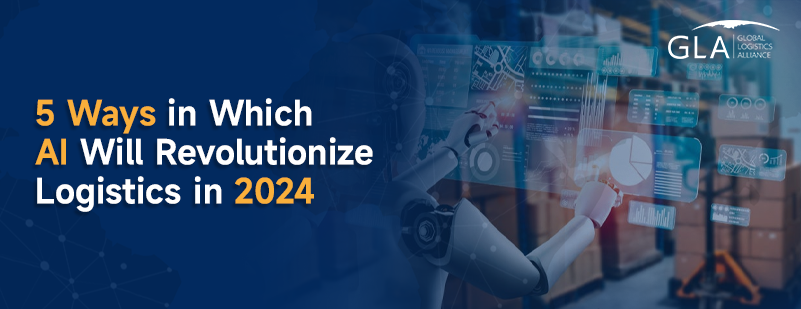Time:2024-02-22 Publisher:Kevin Num:6483

In the ever-evolving landscape of logistics, the integration of artificial intelligence (AI) is proving to be a transformative force, with profound implications for the industry. As we delve into 2024, several key trends are reshaping the way logistics operates, promising increased efficiency, sustainability, and customer satisfaction.
Generative AI, a cutting-edge technology, stands at the forefront of this revolution. The logistics market for Generative AI is poised for an astonishing growth trajectory, projected to surge from $412 million to a staggering $13,948 million by 2032, boasting a remarkable compound annual growth rate (CAGR) of 43.5%. North America is spearheading this transformation, commanding a 43% market share.
The true potential of Generative AI lies in its ability to minimize stockouts, optimize delivery routes, identify risks, and allocate resources efficiently. Applications range from real-time communication enhancements to AI-powered chatbots and virtual assistants. Despite its immense potential, a McKinsey report indicates that less than one-third of organizations have fully embraced AI across multiple functions, hinting at the untapped opportunities awaiting exploration.
As sustainability takes center stage in 2024, the logistics industry is addressing the critical issue of carbon emissions. Globally, responses vary, with the United States, Indonesia, the Middle East, and India adopting distinct approaches. The United States, being the largest contributor to transportation emissions, is expected to take robust initiatives to curb its environmental footprint.
Indonesia is progressing rapidly, driven by consumer demand for sustainability, while the Middle East is investing in technology to reduce carbon emissions. Despite facing sustainability challenges, India's logistics businesses are actively investing in solutions, reflecting a shared commitment to a greener future.
The rise of quick commerce, with its emphasis on ultra-fast deliveries, is reshaping the logistics landscape worldwide. Major players are making substantial investments, anticipating revenues of $30.8 billion in the United States alone by 2024. The Middle East and Indonesia are experiencing rapid growth in this sector, while India foresees an annual growth rate of 49.5%, with a potential market volume of $7.88 billion by 2027. The Quick Commerce Revolution is a testament to the industry's responsiveness to the changing demands of consumers who prioritize speed and convenience in their deliveries.
In 2024, asset-light logistics is emerging as a dominant trend, focusing on enhancing customer experiences and reducing dependence on physical assets. A staggering 67.5% of global companies are opting for third-party logistics (3PL) providers for transportation, while 63.5% are doing the same for warehousing. The financial weight of transportation costs is a key driver behind the adoption of asset-light logistics, allowing companies to streamline their operations and allocate resources more efficiently.
Cloud-based solutions are also playing a pivotal role in reshaping logistics. With widespread adoption expected in 2024, cloud computing offers advantages in terms of speed, cost-effectiveness, control, scalability, and security.
An estimated 86% of supply chain-based companies are projected to incorporate cloud computing within the next five years. The global cloud supply chain management market is poised for exponential growth, predicted to surge from USD 21.79 billion in 2022 to an estimated USD 71.93 billion by 2030, boasting a CAGR of 16.10%. The decision between on-premise and cloud-based solutions is crucial for businesses, each presenting unique advantages and challenges.
In conclusion, the logistics industry in 2024 is undergoing a profound transformation fueled by the integration of AI, sustainability initiatives, quick commerce, asset-light logistics, and cloud-based solutions. As these trends continue to unfold, businesses that embrace innovation and adapt to these changes will be well-positioned to thrive in this dynamic and evolving landscape. The future of logistics is being shaped today, and it is clear that the power of AI is at the forefront of this revolutionary journey.



